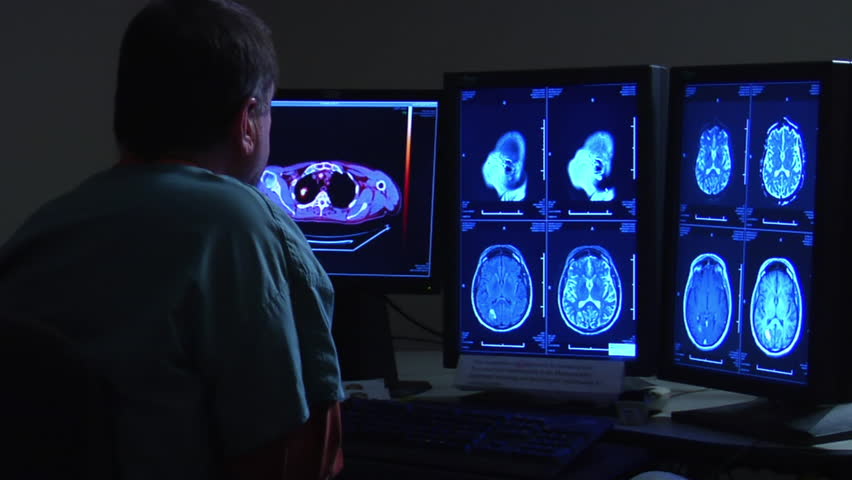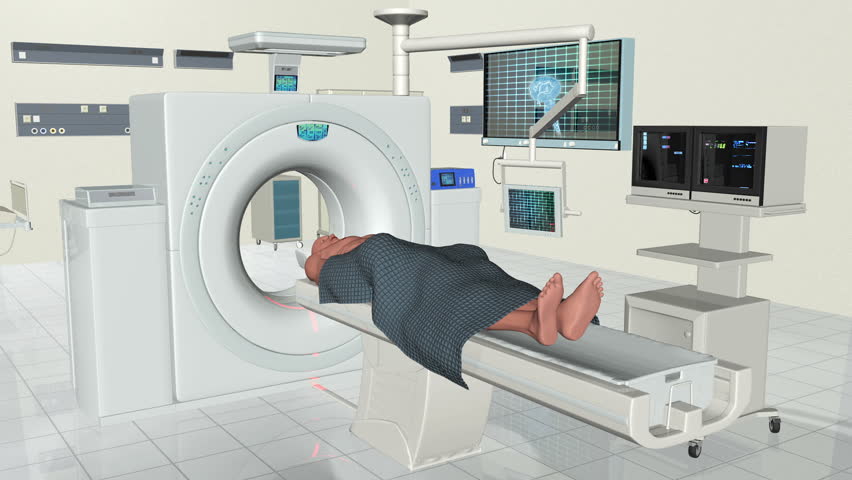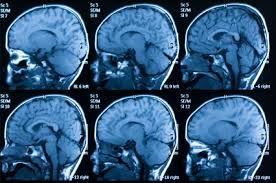Gurmeet Imaging
MRI

What is an MRI Scan?
MRI stands for Magnetic Resonance Imaging. An MRI scan uses a strong magnetic field and radio waves to create pictures, on a computer, of tissues, organs and other structures inside your body. Magnetic resonance imaging (MRI) is a type of scan that uses strong magnetic fields and radio waves to produce detailed images of the inside of the body. An MRI scanner is a large tube that contains powerful magnets.
How does the Machine Scan?
Human Body is made up of water to the extent of 97%. Water molecules are made up of protons(H+) which are nothing but small moving charged particles. These protons are have their own tiny magnetic field & behave like small bar magnets.
Normally these protons are aligned randomly in a haphazard way. When you are placed in a MRI scanner, a strong magnetic field is applied which aligns these protons. All the protons line up in parallel to the magnetic field, like tiny magnets. (Same as what happens when you place multiple small magnets in close proximity to a large magnet).
Then, short bursts of radio waves are sent from the scanner into your body. The radio waves knock the protons from their position. These radio waves are not radiation but are like the waves used in Bluetooth, radio stations, microwaves, cellular phones ect.
When the burst of radio waves stops, the protons realign back into place. As they do so they emit radio signals. The protons in different tissues of the body realign at different speeds. Therefore, the signal emitted from different body tissues varies. So, for example, softer tissues can be distinguished from harder tissues on the basis of the signals sent.
These signals are detected by a receiving device in the scanner.
The receiving device transmits the signals to a computer. The computer creates a picture based on the radio signals emitted from the body.




How is an MRI Scan Experience?
The MRI scanner is like a tunnel about 1.5 metres long, surrounded by a large circular magnet. You lie on a couch which then slides into the scanner. A 'receiving device', like an aerial, is placed behind, or around, the part of the body being examined. This detects the tiny radio signals emitted from your body. When each 'picture' is being taken you need to keep still for a few minutes, otherwise the scan picture may be blurred.
The scan itself is painless. The whole procedure can take 15-40 minutes. It may be a little uncomfortable lying still on the couch for this time. Small children may need a general anaesthetic to keep them still long enough for the pictures to be taken. Where you lie is quite enclosed and some people may find this bit unsettling. If you have a fear of confined spaces (claustrophobia) you should discuss this with your doctor before you go for the scan. Most of the times a simple reassurance & slight modification in positioning of patient is more than enough to get the scan done. The Golden Rule is to remember that you are in control of the situation & we can take you out in 10 secs if you feel uneasy. You will never get stuck inside.
In some cases, an injection of a special contrast dye is given into the bloodstream via a vein on the arm. This helps to give clearer pictures of certain tissues or organs being examined.
The radiographer sits in the control room next to the scanner and observes through the window. However, you can talk to them, usually via an intercom, and you will be observed at all times on a monitor.
The scanner is noisy so you will be given some headphones or earplugs to protect your ears from the noise. Quite often you can listen to the radio through the headphones or bring a CD to listen to.
Multicapabilty High field Strength MRI
- Musculoskeletal Imaging.
- Spine Imaging.
- Neuroimaging.
- Stroke Package.
- DTI with Fiber Tracking.
- MR Angiography.
- Abdominal Imaging with MRCP.
We are Committed to
Excellence in diagnostic care
We have experienced as well as highly qualified doctor's. Therefor we have excellent Diagnose Care.
Reporting & Supports
Most of the larger laboratories have fully automated equipment and quality and statistical analyses are run daily on them.
Computerised Equipments
We believe in latest and advanced technology so that we get accurate result's. We have fully computerized equipment's.
